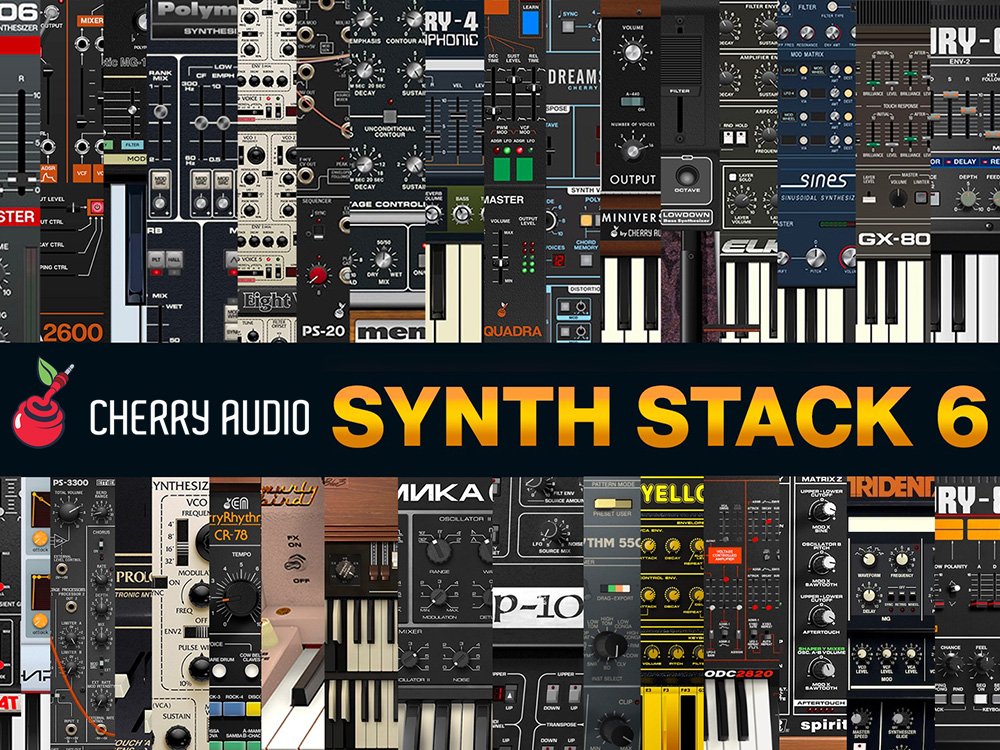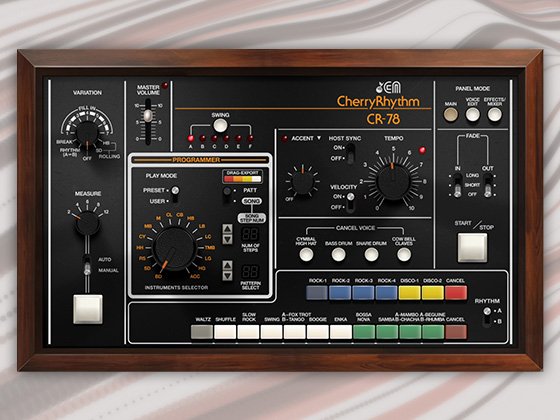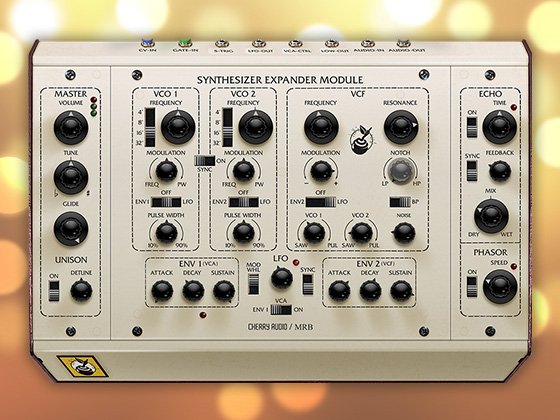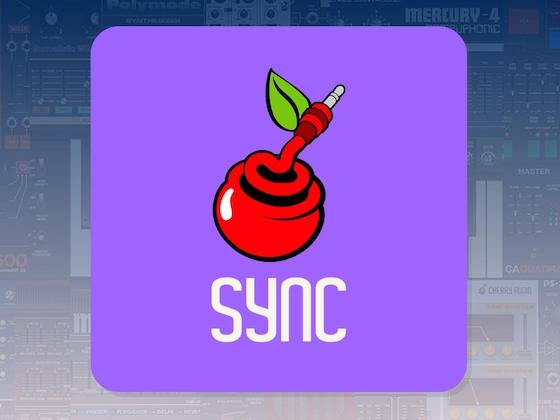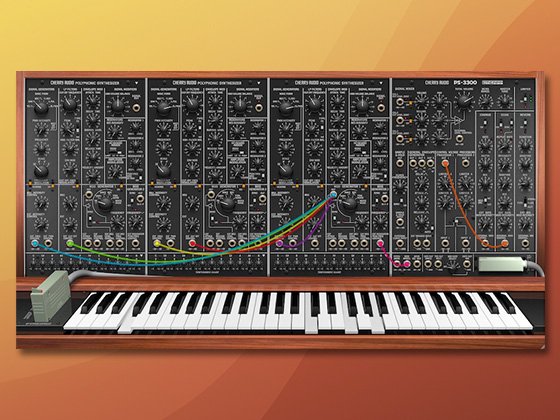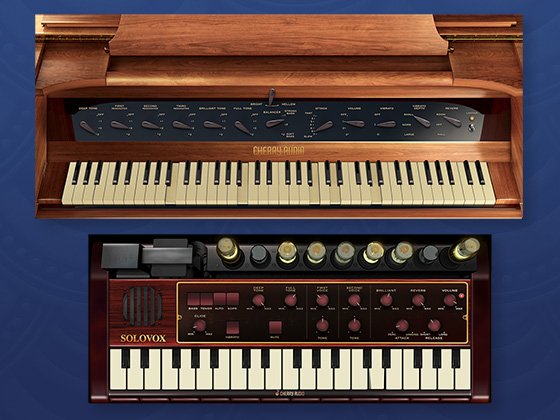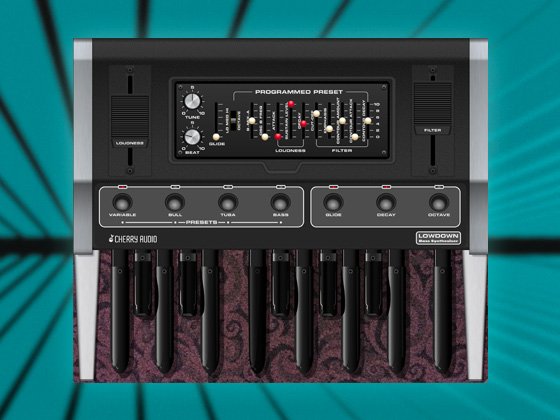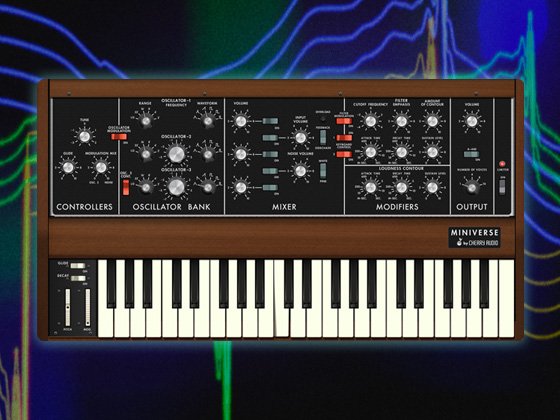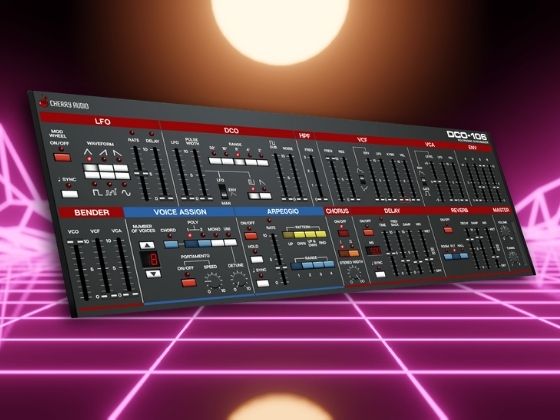Manufacturer: Weevil
$20.00
The Weevil Phase Distortion Oscillator takes inspiration from the CZ range of Casio synthesizers and uses phase distortion as its main synthesis method. To add more flexibility it supports two layers of phase distortion and allows replacing the standard sine carrier wave with any single cycle waveform. Check this wiki page for a brief summary of phase distortion: https://en.wikipedia.org/wiki/Phase_distortion_synthesis
The module is a dual oscillator. Each oscillator has an audio out, there is also a mixed audio out and a mod audio out for audio rate modulation between the two oscillators.
OSCILLATORS
Each oscillator is built up by these main elements:
- a carrier wave (by default this is a sine wave).
- a shape (the modulator). The amount of distortion is set with the inner timbre knob (ITMB). A secondary shape can be enabled, if this is done the modulator with alternate between shape 1 and shape 2.
- an optional outer shape (a modulator with a lower frequency). The amount of outer distortion is set with the outer timbre knob (OTMB).
- a phase offset.
Use the buttons A and B to switch between the oscillators.
OCT - sets the octave of the selected oscillator. At -6 (all the way to the left) LFO mode is enabled, see below.
FINE - fine tune between -7 and +7 semitones.
LFO mode is enabled by setting the OCT knob to -6. This turns the oscillator into a tempo synced LFO. FINE acts as a multiplier to the tempo, each step above 0 multiplies the tempo by 2 and each step below 0 divides it by 2. At 120 bpm you get a range of approximately 0.016Hz to 256Hz. This can be further brought down by using the inner and outer multipliers. In LFO mode the pitch / temp is not affected by the V/CV input, you can still change this with the assignable CV input.
Inner multiplier lets you apply the phase distortion over a series of wave cycles instead of the default of one wave cycle. As long as you have any phase distortion applied this will give you the subharmonics of the oscillator's pitch.
The outer multiplier does something similar, but applies it at a higher level (see below on how that interacts with the inner multiplier). It has its own shape (edit that with the OUTR shape button).
IMLT - Sets the inner multiplier (see SHAPE below).
OMLT - Sets the outer multiplier.
Outer multiplier type can be set with the button above OMLT. By default this is set to OFF, this means that the outer multiplier is completely ignored. The other options set length of the outer shape to a multiple of the inner shape. The available values are:
- OFF - outer multiplier is turned off
- MULTIPLY STEP - multiplies the inner multiple by 1 to 16 locked to whole values. In effect this will give you the 15 first subharmonics. The math: fullMultiplier = innerMultiplier * outerMultiplier.
- MULTIPLY FREE - same as MULTIPLY STEP but not locked to whole values (this will give you inharmonic tones). The math: full multiplier = innerMultiplier * outerMultiplier.
- FRACTION STEP - sets the outer shape to 1 + the fraction between the outer and inner multipliers. This can give both harmonic and inharmonic sounds depending on the values of the inner and outer multipliers. . The math: fullMultiplier = (innerMultiplier * (outerMultiplier - 1)) / innerMultiplier.
- FRACTION FREE - same as FRACTION STEP but not locked to whole values. The math: fullMultiplier = (innerMultiplier * (outerMultiplier - 1)) / innerMultiplier.
ITMB - The inner timbre sets the amount of phase distortion from the inner shape.
OTMB - The outer timbre sets the amount of phase distortion from the outer shape.
CARRIER WAVE
By default the carrier wave is a pure sine waveform. This can be changed with the upper right button under the OTHER label (by default the button is labeled SIN).
A small set of waves is included in the module but you can get full flexibility by loading your own single cycle waveforms. To do so, select the option "LOAD SINGLE CYCLE WAVEFORM" in the drop down menu. The maximum sample length is 8192 samples.
You can cycle through the waveforms automatically by holding SHIFT and clicking the button, you can also right click the button (this will also open the edit value pop-up, I couldn't find a way to turn this off).
You can find single cycle waveforms here: https://www.adventurekid.se/akrt/waveforms/
SYNC
Both oscillators A and B supports syncing. Sync is defined by sync source:
- EXT - external input
- PHASE - the phase of the other oscillator (when phase goes from 1 to 0)
- WAVE - the value of the other oscillator (when wave value goes from negative to positive)
And by sync option:
- NONE - no syncing
- HARD - reset phase
- SOFT - reset phase if phase < x, x is set with the knob (0-1), setting this to 1 makes it HARD sync
- BUMP - adds x to phase, x is set with the knob (0-1)
SHAPES
The shape acts as the phase modulator on the underlying carrier wave. In effect it determines the speed at which different parts of the underlying wave are read. The shape graph shows you the shape (in green) and its effect on the carrier wave (in blue). The x-axis of the shape graph represents time, the y-axis of the shape graph indicates the phase position that is read in the carrier wave to generate sound. By default the shape is a straight line from bottom left to top right of the graph. This means it reads the carrier wave at constant speed resulting in a pure sine wave. By moving the X-knob to the left we will read the first half of the sine faster and the second half of the sine slower, this will give you something similar to a saw or a pulse wave.
Each oscillator supports two inner shapes (1 and 2) and one outer shape (OUTR). To edit a specific shape just click on its respective button.
Next to the OUTR button you can set the shape type of your selected shape. The button is labelled after the shape type of the currently selected shape (by default this is PD for shape 1). The different shape types are:
- OFF - only available for the second shape. Turns off shape 2.
- PHASE DISTORTION (PD) - Standard phase distortion.
- PHASE DISTORTION TABLE (PDT) - Lets you create a table of up to 16 shapes and interpolate between them using the frame knob (FRM).
- RESONANT (RES) - Multiplies the frequency by a value between 1 and 16 (defined by Timbre) and with an amplitude given by the window function displayed in the graph.
LOAD - The module includes some standard shapes, you can access them by clicking the LOAD button. This also allows you to open a previously saved wave (click on LOAD and select "LOAD SAVED SHAPE" in the drop down menu).
SAVE - Lets you save the current shape.
You have six main inputs to control the shape:
- X - set the midpoint of the x-axis
- Y - set the midpoint of the y-axis
- LEN - adds a separation at the (X,Y) position
- NGL - sets an angle of the separation set by the length knob (LEN)
- TMBR - sets the amount of phase distortion for the shape. For RESONANT shapes this sets the frequency multiplier instead.
- FRM - only enabled for PHASE DISTORTION TABLE. Sets the position in the shape table.
NRM - Multiplier type decides how phase distortion is applied when the inner multiplier (IMT) is higher than 1:
- NORMAL - the phase distortion shape is applied across the full outer shape.
- STRETCH - the wave is stretched (wont change the wave form, just the frequency).
- REPEAT - the wave is repeated (neither wave form nor pitch is affected).
UNI - Polarity type lets you add a multiplier to the shape controls. This splits the shape into a number of equal sections and applies the shape controls (X, Y, LEN, NGL) to each section.
- UNIPOLAR - one section
- BIPOLAR - two sections
- TRIPOLAR - three sections
- QUADRAPOLAR - four sections
- PENTAPOLAR - five sections
- HEXAPOLAR - six sections
SYM - Symmetry determines how the shape controls are applied when the polarity is higher than 1 (more than one section). The available options are:
- ASYMMETRIC
- SYMMETRIC X
- SYMMETRIC Y
- SYMMETRIC
PHASE DISTORTION TABLE
Below the symmetry button you can find three buttons dedicated to the phase distortion table. These buttons are only visible if you have set the shape type to PHASE DISTORTION TABLE. This type enables you to create a table of up to 16 shapes and interpolate between them using the frame knob (FRM), this works like a simple wavetable where the frame knob sets the position in the shape table.
Table size (default label is "1-4") - set the size of the shape table.
Frame selector (default label is "1") - select the shape you want to edit.
LOAD - load a standard or saved shape into the selected frame.
CV
Each oscillator has a dedicated CV input jack for its inner timbre, its outer timbre and its phase. The module also has 6 assignable CV sections with a label (also works as a target selector), an input jack and an attenuverter.
To save CPU shape and CV are only recalculated every 8 samples. You can change this with the top left button in the OTHER section (default label is DIV8). If you want to use audio rate modulation, change this to FULL.
When applicable the CV can be set at multiple levels, below you can find a full breakdown of TIMBRE CV. The same applied to most other CV targets:
- TIMBRE - Inner timbre for both oscillators, all shapes
- TIMBRE OSCILLATOR A - Inner timbre for oscillators A, all shapes
- TIMBRE OSCILLATOR A - Inner timbre for oscillators A, all shapes
- TIMBRE OSCILLATOR A SHAPE 1 - Inner timbre for oscillators A, shape 1
- TIMBRE OSCILLATOR A SHAPE 2 - Inner timbre for oscillators A, shape 2
- TIMBRE OSCILLATOR B - Inner timbre for oscillators B, all shapes
- TIMBRE OSCILLATOR B SHAPE 1 - Inner timbre for oscillators B, shape 1
- TIMBRE OSCILLATOR B SHAPE 2 - Inner timbre for oscillators B, shape 2
The available CV targets are:
- MIX - mix between oscillator A and oscillator B
- MOD - mix between mix and mod output
- TIMBRE - Inner timbre
- OUTER TIMBRE - Outer timbre (outer shape needs to be enabled for this to have any effect)
- PITCH - oscillator pitch
- LINEAR FM - linear FM of up to 3 octaves up
- HZ OFFSET - allows you set set a Hz offset (to get constant beating regardless of pitch)
- INNER MULTIPLIER - inner multiplier (multiplier is only changed at phase reset so changes can take a while to apply if both inner and outer multipliers are high)
- OUTER MULTIPLIER - outer multiplier (multiplier is only changed at phase reset so changes can take a while to apply if both inner and outer multipliers are high)
- SYNC AMOUNT - sync amount (only used in SOFT and BUMP sync modes)
- PHASE - phase
- X - x position for the target shape(s)
- Y - y position for the target shape(s)
- LENGTH - length for the target shape(s)
- ANGLE - length for the target shape(s)
- FRAME - frame for the target shape(s) (only used for shapes using PHASE DISTORTION TABLE mode)
OUTPUT
At the bottom of the module you can find the main input and output jacks.
V/CV - voltage per octave pitch CV input affecting both oscillators.
SNC - external sync input (see SYNC above).
Phase output jacks (AIP and AOP) - to make it easier to visualize the output in an oscilloscope the module has two assignable output jacks for the inner and outer shape. You can use the buttons above the output jacks to decide the output source. The available signal sources for these outputs are:
- OSCILLATOR A INNER PHASE (AIP)
- OSCILLATOR A INNER PHASE DISTORT (AID)
- OSCILLATOR A OUTER PHASE (AOP)
- OSCILLATOR A OUTER PHASE DISTORT (AOD)
- OSCILLATOR B INNER PHASE (BIP)
- OSCILLATOR B INNER PHASE DISTORT (BID)
- OSCILLATOR B OUTER PHASE (BOP)
- OSCILLATOR B OUTER PHASE DISTORT (BOD)
To the right of the phase output jacks you can find the individual audio output jacks. By default these are labeled A and B and give you the output of oscillator A and B respectively.
With the icon between A and B you can switch to different output modes:
- NORMAL - A and B acts as individual outputs for oscillator A and B.
- STEREO - use the mix knob to separate the outputs of the two oscillators between L and R.
- MOD STEREO - use the mix knob to separate the outputs of the two oscillators between L and R. Use the mod knob to decide the mod amount.
MIX - mixed output of A and B, set mix with the mix knob. This can be automated with the assignable CV.
MOD - mod output, applies a modulation effect between A and B (see list below). The knob lets you mix between the mix output and the mod output. This can be automated with the assignable CV.
To change the mod type you can click on the arrow above the mod output, the available options are:
- RING MODULATION - ring modulation between current value and mod value
- AM RECTIFY - amplitude modulation between current value and the absolute value of the mod value
- AM OFFSET - amplitude modulation between current value and the scaled and offset positive only mod value
If you have questions or suggestions, pleas reach out using the "Contact Manufacturer" link above.
